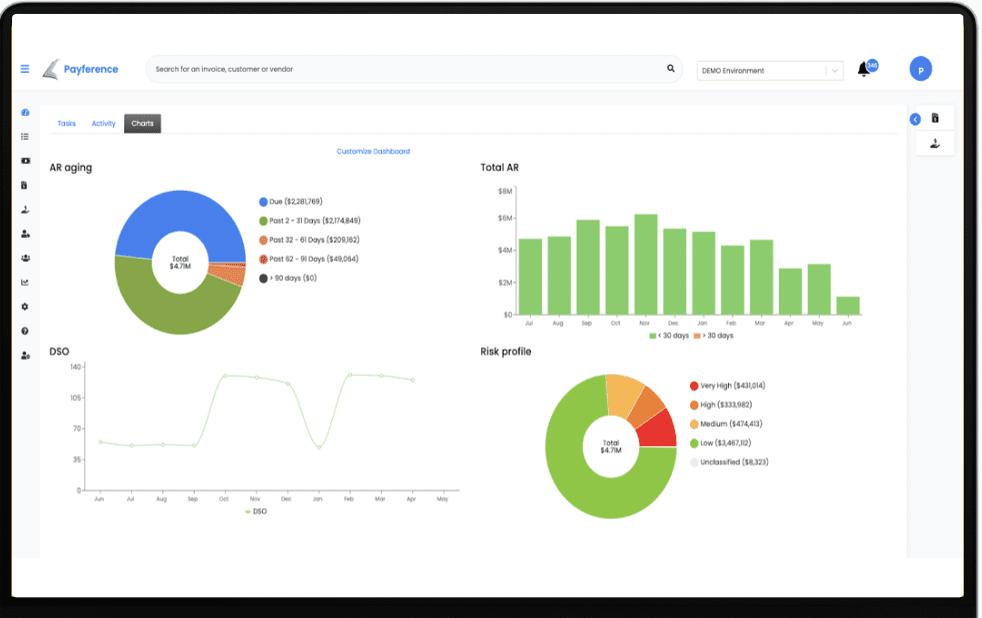Time Management Tips for Finance Professionals
In the fast-paced world of B2B finance, time is a precious commodity. As a finance professional,...

A world in which every customer pays invoices early or on time sounds ideal, but it’s simply not realistic. Even the best customers will have times when they miss the mark and don’t pay on time. And so the accounts receivable aging report becomes a necessary and useful tool for any business that extends credit to customers and needs to manage its AR effectively.
There are a handful of reasons why customers pay late. It could be that the payment truly did get lost in the mail. Or your customer may be experiencing a drop in their own sales and therefore can’t make payment. And, like it or not, some customers may delay or even withhold making payment because of their dissatisfaction with your product or service.
Whatever lies behind these late payments, those outstanding invoices need to be accounted for by aging your accounts receivable. Read on to learn what an accounts receivable aging report is and four ways you can use it to your advantage.
When you age your accounts receivable you are identifying how much time has passed since you sent out an invoice and the current date. The number of days is your AR aging and the information about each of your customer’s debts is presented in an accounts receivable aging report.
An AR aging report is usually broken into time periods of 30-day increments:

As you can see, the report gives you granular information about how much you are owed from each customer as well as how much is owed in each time period.
Having this information at your fingertips is critical to managing your accounts receivable. As a receivable ages, its quality declines–its value decreases. Eventually, if that receivable is never paid, you have to write it off as uncollectible which will negatively impact your cash flow and profit.
Like any other report, the accuracy and usefulness of your aging report is only as good as the quality of the data gathered to create it. If you rely on manual processes to complete accounts receivable tasks, the report can be misleading because of human error that inevitably occurs. It’s easy to invert numbers or input data incorrectly which then produces an inaccurate aging report.
Another way that the information in an aging report can be misleading is the timing of the report. This can happen when a company sends invoices at the end of the month and then generates the aging report a few days later. Previous month’s invoices will show up as past due, but some of them could have been paid after the aging report was created.
On the other hand, it will look like you have fewer receivables than you actually do if your aging report is created before the end of the month.
It’s important to align your payment terms with the time periods in your aging report for the most accurate picture of your accounts receivable.
All these pitfalls can be avoided if you choose to automate your AR process. Automation eliminates human error, improves accuracy and provides financial insights in real-time for better decision making.
An aging report gives you a historical overview of all your receivables. But it also gives you information you can use to evaluate your AR policies and practices. With an accurate aging report you can determine where your process is weak and finetune items to improve your collections.
Keep in mind that your business still needs to operate as usual while you’re waiting for customers to make payment on goods or services they’ve already received. You’ll have to meet payroll and other obligations regardless of when those payments come in. Use the aging report to project your future cash flow. If it looks like it’s going to be tight, you can make adjustments such as delaying a planned purchase.
Take a look at your aging report and you should be able to determine how effective your collections process is. If the report shows that most of your receivables are older that may be signaling that your collections process needs improvement. Often customers make it a habit to not pay until the second or third reminder.You may need to manage these customers more attentively than the rest of your customer base. This could mean sending reminders more often or enforcing your late fee policy more consistently. An alternative strategy is to incentivize your customers to pay with early payment discounts.
Yet another way to use an accounts receivable aging report to your benefit is to shed light on the effectiveness of your existing payment terms and credit policies. Even if you are successful with collections overall, having too many accounts that pay late costs you more in the long run. It costs more in processing and the value of the receivable declines as time wears on.
If you see that certain customers habitually pay late, take a second look at your billing policy. Ceasing to do business altogether with those customers would be a drastic measure, but you could offer net 15 instead of net 30. It could be that your lenient payment terms are partially to blame for customers’ late payments.
You can also use your accounts receivable aging report to estimate the amount of your potential bad debt. If you decide that a receivable is uncollectible, it is a bad debt and you need to write it off in your financial statements. For your accounting to be compliant and accurate, you need to make allowances for these bad debts.
No matter the size of your business, an accounts receivable aging report is a necessary tool for managing your AR effectively. An accurate aging report can help you predict cash flow, improve your collections process, identify problems with your credit policies and payment terms and estimate your bad debt allowances.
The most useful aging report will be accurate and based on real-time data, and the best way to generate this kind is to use an AR automation tool like Payference. Learn more about Payference by scheduling a short, no-pressure demo today.
In the fast-paced world of B2B finance, time is a precious commodity. As a finance professional,...
Many times it’s the little, mundane tasks that can make a critical difference in the overall big...
No matter what stage of growth your business is in, you’re always on the lookout for new ways to...